8 things you'll love about new Surface Pro – and 3 things you'll hate
Microsoft's Surface Pro for 2017 is expected to begin shipping today. Here are the top things we think are the best new changes that you'll love, along with and a few you won't love at all.
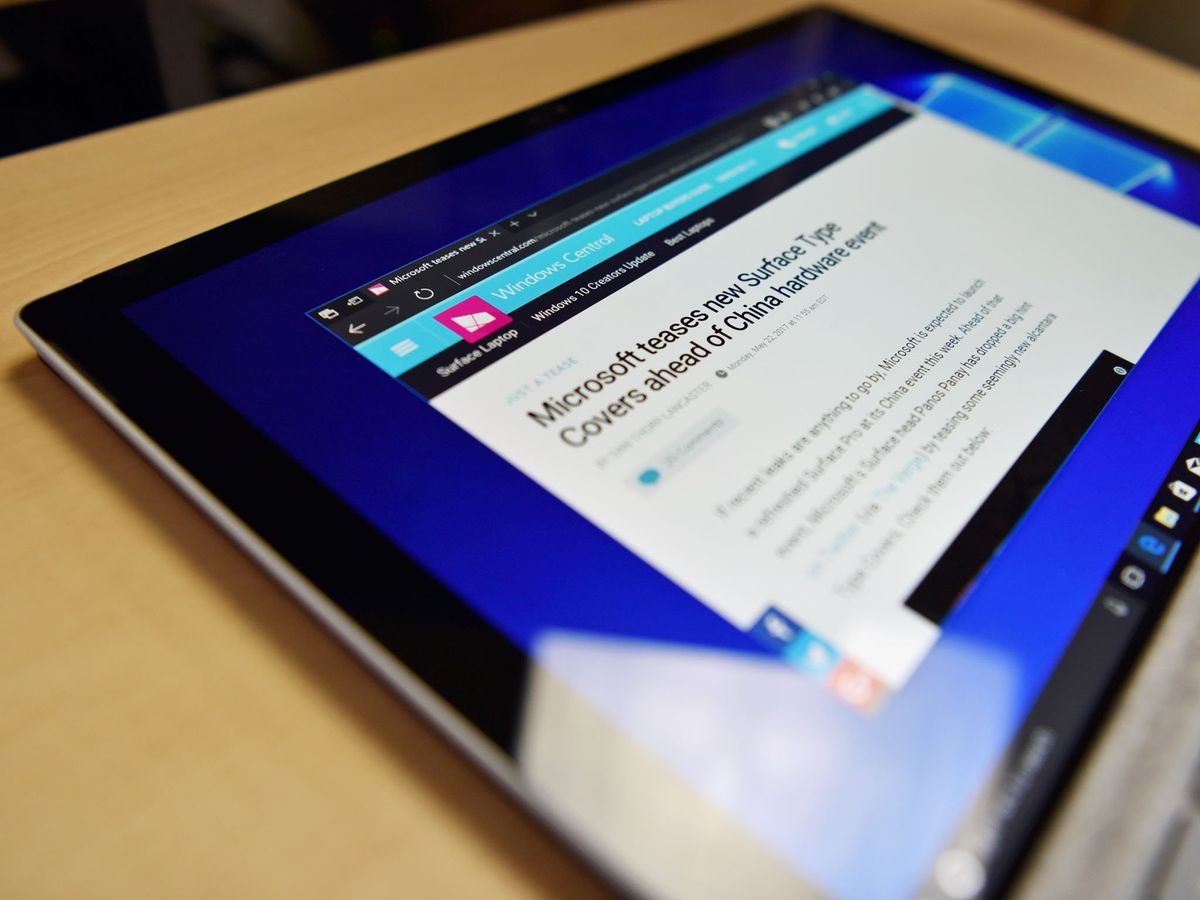
I cobbled together a few pros of the all-new Surface Pro that stand out as reasons to be excited about it. To be fair, I had to toss in a few negatives as well, but that list is substantially shorter.
Surface Pro 2017 review: A 2-in-1 tablet you'll actually want to use
Things to love about the new Surface Pro
There's a lot to like about the new Surface Pro, and it's not just about the new processor. Here are the things that I think you should take away from the device and that you should consider when buying.
1. Longer battery life
Let's face it, the Surface Pro line was never known for its outstanding battery life. At the most, you could say it was acceptable or approaching great, but it was always an hour or two short.
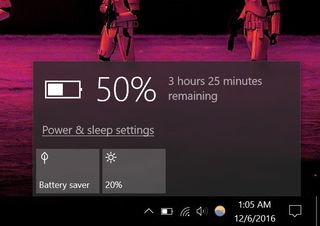
Microsoft is making bold claims with the new Surface Pro with a rating of 13.5 hours. Those numbers are based on closed-loop video playback, but my experience tells me such an estimate translates into a real-world eight to nine hours of use.
That's reasonable, too, with Intel's seventh generation "Kaby Lake" processor. Don't forget, Microsoft made a lot of battery improvements with the Creators Update especially for standby functionality. The company is also hard at work on its new Power Throttling feature for the Fall Creators Update due later this year, which does even more for battery usage.
Will the new Surface Pro 2017 be the first Surface Pro for which you can leave the AC charger home for the day? It looks like it.
Get the Windows Central Newsletter
All the latest news, reviews, and guides for Windows and Xbox diehards.
2. Amazing pen-and-ink experience
The Surface Pen became respectable with the Surface Pro 3, but it was the Surface Pro 4's 1,024 pressure levels and design that won me over.
In 2017, Windows 10 is even more Pen-friendly, with even greater features coming in the Fall Creators Update, including universal support throughout the OS.
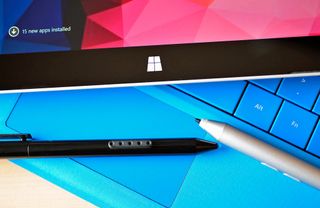
With the new Surface Pro, Microsoft has a brand-new co-processor that dramatically cuts down inking latency (the "lag" when you scribble fast between the pen tip and visible digital ink), and it raised the levels of pressure from 1,024 to 4,096. The company did all that while still making the Surface Pen's battery last one year.
I tried the new Surface Pen on the Surface Pro, and it blurs the line between digital and analog inking. This pen feels amazing to use, and it even has tilt-and-rotation support now, addressing some of the very last complaints artists had in the past.
This Surface Pen may go down as an industry legend. It may even make non-pen users make the jump, it's that good.
3. Fanless Intel Core i5
With the Surface Pro 4, Microsoft gave consumers a fanless option with the Intel Core m3 variant. While a great device, that is the lower-tier Surface Pro and it lacks the punch of a real Core-i processor.
Somehow, Microsoft figured out how to make a speedier – and hotter – seventh generation Intel Core i5 fanless now, too.
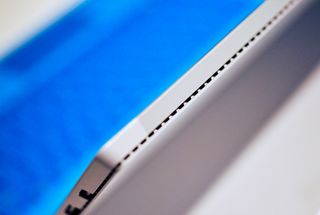
For those who like a quiet Surface Pro experience, but still want the performance of a Core i5, you now have your wish.
4. Iris Plus graphics
Putting in dedicated graphics into such a slim machine as the Surface Pro is still not possible, but at least the Core i7 version of the new Surface Pro gets a more powerful Intel Iris Plus Graphics 640 GPU.
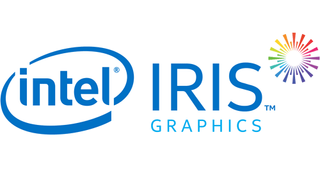
What should users expect? The Iris Plus Graphics 640 was announced in January and is still very new, but first benchmarks put it between a dedicated NVIDIA GeForce 920M and GeForce 940M. There is also support for H.265/HEVC Main 10, and it can power up to three external monitors. The Iris Pro 640 doubles the pipelines to 48, from 24, when compared to the Intel HD 620, which is found is most "Kaby Lake" Ultrabooks.
All you need to know is Iris Plus will give the Core i7 version of the Surface Pro extra punch and should easily best the Core i7 Surface Pro 4 in benchmarks.
5. 4G LTE (optional)
Although not coming until "later this year," Microsoft is finally putting 4G LTE into some models of the new Surface Pro. Previously only available in the 10-inch Surface 3 with a weak Intel Atom processor, consumers can now unleash the Surface Pro wherever, whenever.
Microsoft showed us that there are no physical differences in appearance between the non-LTE and LTE versions. The company hid all the antenna lines, kept the display bezel sizes the same, and it says the 4G won't dramatically impact battery life compared to Wi-Fi.
Besides support for a nano SIM, Microsoft is also adding electronic SIM (eSIM) support too so that you can buy a data plan in the Windows Store and instantly activate it.
6. Instant-on
Microsoft is touting its new instant-on abilities for the Surface Pro for a good reason.
For years, consumers loved Apple iPads because they were always just powered on in a standby mode. Tapping the power button turned on the screen instantly, making laptops look slow in comparison. As a result, many people grabbed their iPads instead of their laptops.
No more! The Surface Pro now behaves like a tablet. The power button instantly turns the display on with no visible booting or loading. It's an impressive experience.
7. Improved display
The Surface Pro 4 came out almost two years ago. A lot has changed with displays and manufacturing, and that carries over to the new Surface Pro. Sharing the same "world's thinnest" bonded glass claim as the Surface Laptop, the new Surface Pro's display is now more consistent with less (maybe even no) light bleed.
Colors look sharper on the new screen, and there are now color profiles like sRGB, DCI-P3, and Vivid settings, which graphics professionals love.
8. Available in 26 markets at the same time
Let's all take a moment to appreciate that Microsoft – for the first time – is releasing the new Surface Pro "globally" on the same day. Here's where it should be available later this month:
- Australia.
- Austria.
- Belgium.
- Canada.
- China.
- Denmark.
- Finland.
- France.
- Germany.
- Hong Kong.
- Ireland.
- Italy.
- Japan.
- Korea.
- Luxembourg.
- Netherlands.
- New Zealand.
- Norway.
- Poland.
- Portugal.
- Spain.
- Sweden.
- Switzerland.
- Taiwan.
- U.K.
- US.
Consumers in these countries can all get their mitts on the Surface Pro at the same time. No more laborious rollouts with users in the UK and elsewhere getting dibs months later than the U.S.
While there are more than 26 countries on the planet, and ones like India are conspicuously missing, this is Microsoft's best start yet.
Surface Pro disappointments
This next list is shorter. Sure, you can gripe about how it's not a laptop, but then you can just get the Surface Laptop or Surface Book. Price is low-hanging fruit as everyone knows Surfaces are priced unusually high – nothing new there.
1. No USB Type-C
No USB Type-C or Thunderbolt 3 support is hands-down the biggest disappointment. Microsoft's Vice President of Devices Panos Panay gave me some good reasons for the omission. I'm told there was an extensive debate on the issue internally, too, so it's not like Microsoft simply forgot.
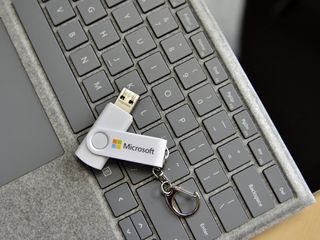
Nonetheless, if you wanted a Surface Pro to work with your NVIDIA 1080Ti GPU via external GPU setup, you're going to be disappointed.
Microsoft showed me a Surface Connect to USB Type-C dongle that is coming soon – it does power and data too – but it is unlikely a substitute for all of you.
While I would have loved USB Type-C and Thunderbolt 3, the forthcoming Surface Connect converter will solve my needs. But I know some of you still won't be happy.
2. Type Cover still flops open
Heading into nitpicking country, the Surface Pro Signatrue Type Cover, made of sumptuous Alcantara, still flops open.
I have no idea why Microsoft cannot put a small magnet there to keep it closed. Dell did it with its Latitude 5285.
While this is not a deal breaker, it just seems like a simple problem to solve.
3. Display may be too small
The Surface Pro gets a lot right, but that 12.3-inch display is still a bit on the small side when compared to most Ultrabooks. The 3:2 aspect ratio certainly helps. Maybe it's just my aging eyes, but I tend to find 13.5 inches easier for extended durations.
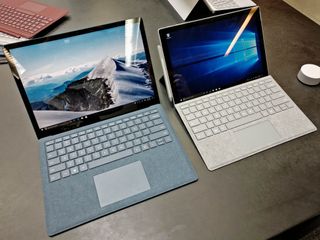
I can always go for the Surface Book or Surface Laptop – both of which are 13.5 inches – but wouldn't it be nice if Surface Pro matched that? Then again, 13.5-inch tablets are probably not that fun.
Wrapping it up
We just posted our in-depth review of the Surface Pro. Hit the link below to see why Microsoft's latest iteration may go down as a milestone.
Surface Pro 2017 review: A 2-in-1 tablet you'll actually want to use
Better battery life, dramatically improved pen, quieter fans and optional 4G LTE make it all very enticing. Combined with the improvements in Windows 10, the new Surface Pro is living up to expectations.
Did I miss anything? Leave a comment below and let me know.
Preorder the Surface Pro at the Microsoft Store
Updated June 15, 2017: This story has been modified to add recently revealed details.
Related Surface Pro stories
- Everything you need to know about the new Surface Pro
- Why isn't the new Surface Pro named 'Surface Pro 5?'
- Why Microsoft's new Surface Pro doesn't have a USB Type-C port
- Surface Pro pricing and availability
- Surface Pro full tech specs
- All the details on the brand new Surface Pen
- Windows Central Surface Pro hub

Daniel Rubino is the Editor-in-chief of Windows Central. He is also the head reviewer, podcast co-host, and analyst. He has been covering Microsoft since 2007 when this site was called WMExperts (and later Windows Phone Central). His interests include Windows, laptops, next-gen computing, and wearable tech. He has reviewed laptops for over 10 years and is particularly fond of 2-in-1 convertibles, Arm64 processors, new form factors, and thin-and-light PCs. Before all this tech stuff, he worked on a Ph.D. in linguistics, performed polysomnographs in NYC, and was a motion-picture operator for 17 years.